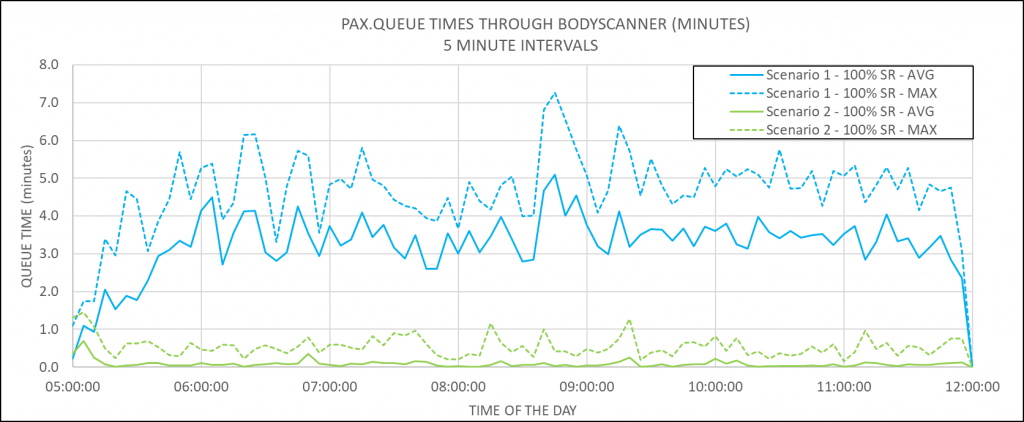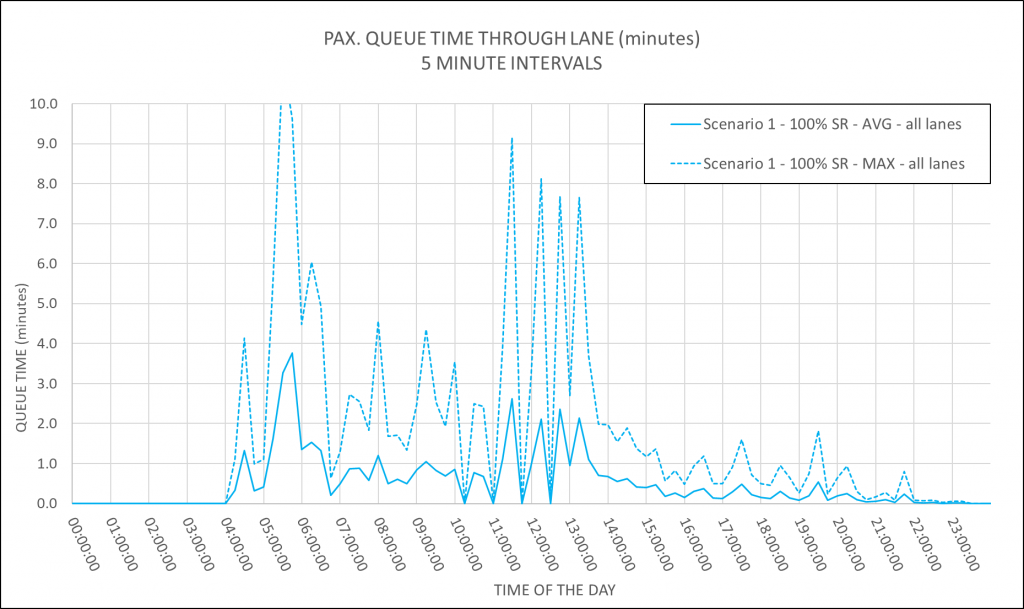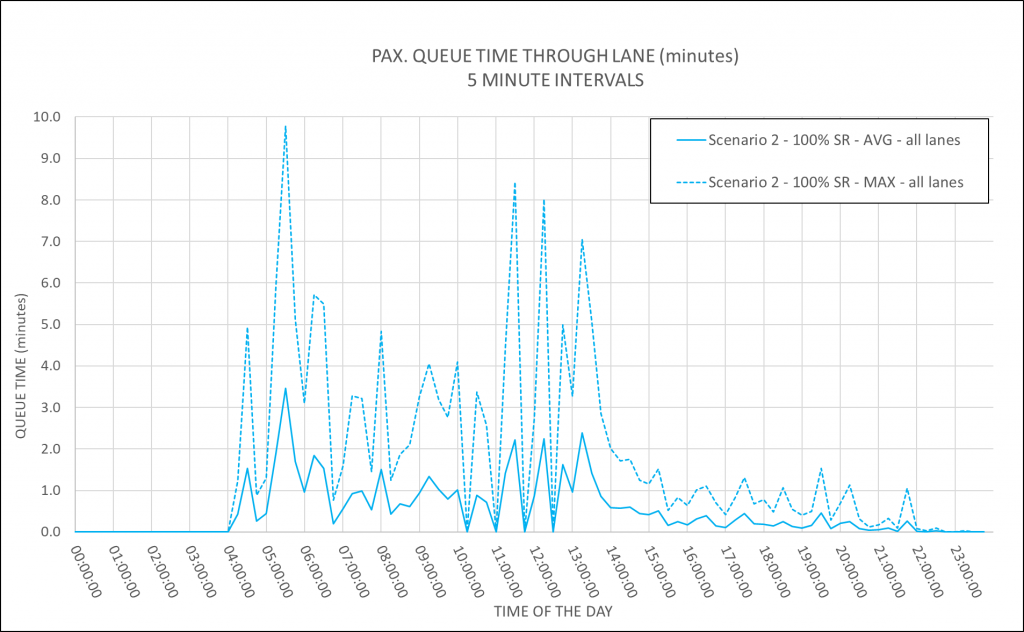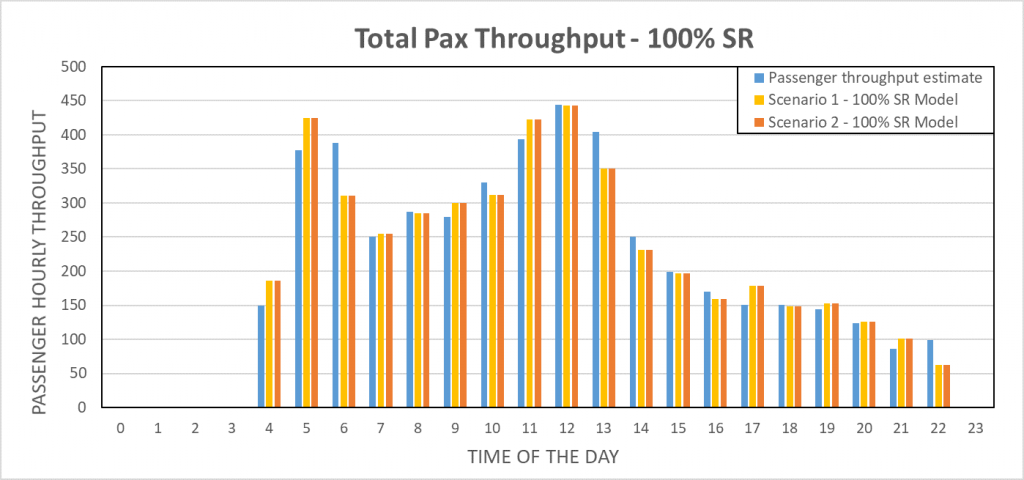Our landslide modelling lead, Irene Bonal Bravo, takes a look at how fast time simulation of security processes can help airports optimise investment in new technology to improve passenger experience.
Airport security lines can be frustrating and time-consuming; never a good start for a journey. The good news is that new technology and regulations aim to improve passenger experience through the use of sophisticated scanning technology that removes the need for passengers to separate out Liquids, Aerosols and Gels and electrical items from their hand luggage. The result should be less passenger queuing times and stress.
However, the new regulations will also require all passengers to pass through a body scanner. Airports therefore need to carefully consider whether their current security layouts are compatible with the new regulations and/or if modifications are required to benefit from the new technology.
At Think we have the experience and know-how to provide assessments for airports on how they can best reconfigure their security areas to maximise the benefits of the new regulations.
The following videos illustrate the main issues:
Scenario 1 represents a fairly typical configuration – 2 lanes and 2 scanners for the security area. The animation demonstrates that the Body Scanner is the main constraint – e.g the most timing consuming process.
Scenario 2 (2 lanes, 3 scanners) shows that adding a body scanner results in a large reduction for passenger waiting times.
But that is not the whole story. Figure 1 illustrates how the level of benefit varies during the day.

Figure 1: Body scanner waiting times
Passenger waiting times decrease from an average of approximately 4 minutes in Scenario 1 to almost no waiting time in Scenario 2. However – take a look at figures 2 and 3. They show something that was not immediately visible in the animation – the reduction in body scanner waiting times has limited effect on the overall process waiting times.

Figure 2: 2-BS pax. waiting times for Scenario 1

Figure 3: 3-BS pax. waiting times for Scenario 2
Average waiting and maximum waiting times are similar for both scenarios. You can see greater differences during peak times but, on average, the overall waiting times would be the same with or without an additional scanner.
So the addition of an extra scanner is not very efficient from the passenger experience perspective – airports might as well save the move and implement the 2 lanes, 2 scanners configuration.
Obviously a conclusion worth double checking- so Figure 4 looks at the total passenger throughput for both scenarios:

Figure 4: Passenger throughput
There are no significant differences in passenger throughput between the scenarios. This supports the original conclusion – adding one scanner is not efficient.
If, still, the airport were trying to achieve a target peak in passenger throughput, Think could use terminal modelling to explore improving the security layout in a different way. For example, looking towards using different body scanner technology with faster processing times.
Ultimately, Think aim to develop a security model that is bespoke to the needs of the airport.

Author: Irene Bravo, ATM Consultant


Recent Comments